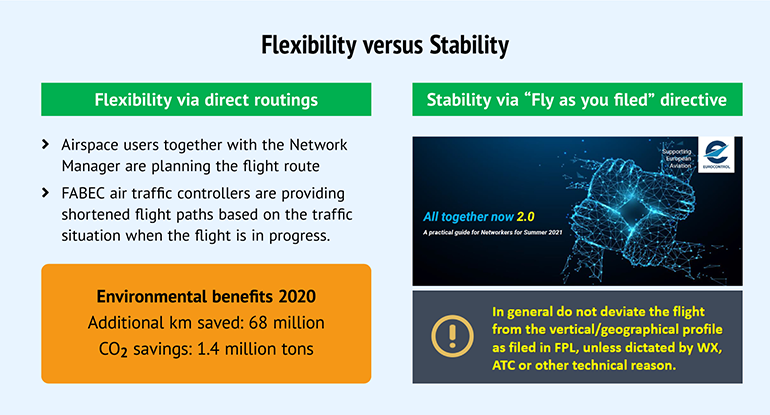Flexibility versus Stability: Tactical directs
Flight planning and operations is based on two principles: Stability and flexibility. Neither is wrong or right, it comes down to the objectives.

Following the capacity crunch experienced by air navigation service providers and airlines during 2018/9, Eurocontrol’s Flow Management Strategy introduced the principle Fly as you filed! – to make the usage of airspace as plannable as possible and to maximise the use of expected capacity. The principle also allows for additional events such as eNM measures which serve to minimise delays by planning route extensions or distributing traffic in the upper and less efficient lower airspace. With each flight path constituted a day in advance, it becomes possible to optimise network performance and ensure operations remain stable.
In cases where the traffic situation changes once the aircraft is airborne, air traffic controllers sometimes provide a direct routing to the pilot. During 2020, airspace users took advantage of direct routes issued by FABEC controllers to raise horizontal flight efficiency above 97 percent – considerably higher than the 94.03 percent available from filed flight plans. This flexibility offered to airspace users by FABEC air traffic controllers reduced the number of additional kilometers by 68 million km compared to the originally routes provided by Eurocontrol’s Network Manager. With these small measures in day-to-day operations, FABEC air traffic controllers helped to reduce aircraft carbon dioxide emissions by 1.4 million tonnes.







